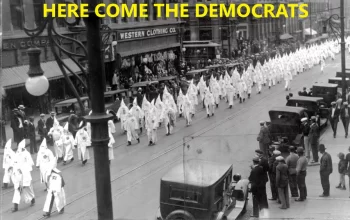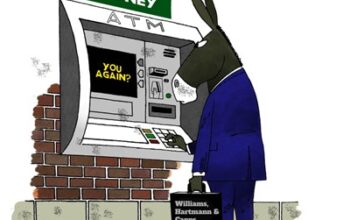Government lies about the cost and value of projects. The High Speed Rail was going to cost $33 billion, from L.A. to San Fran and ready to go in 2022. Now it is going to cost over $200 billion and might be ready in 2050—on a route NOT approved by the voters.
San Jose is doing its job to scam the public for government transportation.
“The project has seen ongoing cost increases over the past decade. An original VTA estimate in 2014 pegged the price at $4.7 billion, with an estimated completion date of 2026.” What is the cost now—for a project they hope to finish in 2036?
“Officials said this week the six-mile extension project for the rail line is expected to cost taxpayers $12.75 billion, a jump of $517 million over the most recent VTA estimates of $12.23 billion.
That is 2.5 times the cost told the public—and already a decade behind schedule. California is trhe home of the multi-billion government/corporate/union scams.
Cost of San Jose BART extension balloons — again
by Joseph Geha, San Jose Spotlight, 3/11/24
Officials said this week the six-mile extension project for the rail line is expected to cost taxpayers $12.75 billion, a jump of $517 million over the most recent VTA estimates of $12.23 billion.
The increased cost estimate was shared with VTA officials in a new risk assessment report from Federal Transit Administration consultants overseeing the project. The consultant said VTA needs to increase its hard construction cost figures by $600 million, though the estimate overall includes a potential $83 million reduction in financing costs.
In the assessment, officials also said they expect the project will likely be finished by May 2037, an additional seven months from the previous October 2036 target.
“My conclusion is that it shows that they believe we have a pretty stable and reliable cost estimate, we just need to be careful about managing the risks going forward,” Tom Maguire, VTA’s chief megaprojects delivery officer, told the VTA board of directors Thursday.
Maguire, who is in charge of making the BART extension a reality, said the roughly 4% federal cost increase is from a draft risk assessment, though that number is likely to remain the same in the finalized report.
“A $500 million increase isn’t really a small increase, even though we’re talking about $12 billion,” District 6 San Jose Councilmember Dev Davis, a VTA board member, said Thursday.
Managing risks
Davis asked if the public transit agency’s decision to design the project’s nearly five-mile subterranean portion with a single, much deeper underground tunnel versus a shallower, dual-bore design factored into the federal assessment of additional risk.
Maguire said the consultant only evaluates the risk and cost of the project as it is planned, and doesn’t do a side-by-side comparison of other possible designs.
The massive project — which Maguire said is the second largest urban transit project in the nation — extends service from its current endpoint at the Berryessa Transit Center into downtown San Jose, and ends in Santa Clara. It will add four new stations: 28th Street/Little Portugal, Downtown San Jose, Diridon and a street-level stop in Santa Clara.
The project has seen ongoing cost increases over the past decade. An original VTA estimate in 2014 pegged the price at $4.7 billion, with an estimated completion date of 2026.
From 2020 to 2021, the cost jumped to $6.9 billion and then to $9.1 billion at the behest of federal overseers, with VTA later revising its own estimate to $12.2 billion in October 2023.
Maguire said more than half of the cost increases the project has faced in its jump from $9.1 billion to $12.2 billion are due to a “challenging cost environment” plaguing big infrastructure projects in the long “hangover” from the pandemic.
“We have experienced pretty rapid inflation of materials, labor and equipment going up over the last decade,” Maguire told San José Spotlight. “What we have is a shortage of skilled labor in the Bay Area and the country, so there are not enough people to do these jobs.”
Maguire said though the cost increase is not something to celebrate, it’s closely aligned enough with VTA’s own estimates and risk reviews that it has boosted confidence within the agency that the project is on the right track.
“We are trying to build something that the residents and taxpayers of Santa Clara County have wanted to see happen for 30 years. We’re closer than we have ever been before to getting BART into downtown San Jose and Santa Clara,” he said. “Our goal is not just to hit that cost number, but to beat it. We’d like to bring this in under the current budget.”
Suds Jain, a Santa Clara Councilmember and VTA board member, said cost increases aren’t good, but he’s happy to see agency officials being more upfront with the board and public, sharing information on cost increases quickly.
He said the board in recent years was kept “in the dark” by previous project administrators, and was surprised when the cost jumped by billions and added years to its timeline.
“I think it’s a very positive change for VTA. They’re not trying to hide the news,” Jain told San José Spotlight. “Tell us the bad news early so we can manage it.”
A January auditor general’s report ripped the agency for a major lack of transparency and misleading reports to the public and the board. The report came just months after the board created an oversight committee to get more regular updates on the project’s cost and timeline.
The federal government is expected to chip in about half of the project’s overall cost, and VTA officials must apply for that grant by July. Maguire said he hopes to have the funding agreement approved by year’s end.
“I think the way to sum up where we are right now is this is the make or break year for BART to Silicon Valley,” he said.



